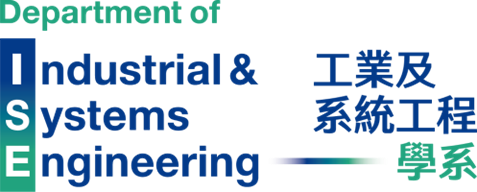Project:
Novel High Efficacy Nano Multi-ring Defocus Incorporated Spectacle Lens for Myopia Control
Awards:
Prize of the State of Geneva
Gold Medal with Congratulations of the Jury
Principal Investigators:
Prof. Benny CHEUNG Chi-fai
Chair Professor of Ultra-precision Machining and Metrology, Department of Industrial and Systems Engineering and Director of State Key Laboratory of Ultra-precision Machining Technology
Prof. TO Chi-ho
Visiting Chair Professor of Experimental Optometry, School of Optometry
Mr Jackson LEUNG Tze-man
Co-founder, Vision Science & Technology Co Ltd (a PolyU Academic-led startup)
Details:

The novel Nano Multi-ring Defocus Incorporated Spectacle (NMDIS) lens is an advanced spectacle lens designed to slow the progression of myopia in children. The NMDIS lens combines two cutting-edge technologies – the Defocus Incorporated Soft Contact (DISC) lens and Ultra-precision Nano Multi-ring Machining Technology (UPNMMT) – to produce high-quality lenses.The NMDIS lens features annular spaced correction zones and defocus zones. The correction zones function as a regular concave lens to correct vision at the centre of the retina, while the defocus zones focus light slightly in front of the retina to achieve myopia defocus. This effectively inhibits elongation of the eyeball, slowing the progression of myopia.UPNMMT enables the precision moulding of NMDIS lenses by fabricating the unique tangential continuity nano multi-ring structure on the moulds. By optimising the width and height of the defocus zones, it enables a reasonable distribution of optical power to generate a smooth and seamless lens surface, and strikes a good balance between clear vision, comfort, and myopia control for children.
Project:
Mars Landing Surveillance Camera for Tianwen-1 Mars Soft Landing Mission
Awards:
Prize by the Technical University of Cluj-Napoca Romania
Gold Medal with Congratulations of the Jury
Principal Investigator:
Prof. YUNG Kai-leung
Sir Sze-yuen Chung Professor in Precision Engineering, Director of Research Centre for Deep Space Explorations, Chair Professor of Precision Engineering and Associate Head, Department of Industrial and Systems Engineering, PolyU
Details:

This is a space qualified camera designed for use on Mars. The camera has a wide temperature range, low distortion, an ultra-wide 170-degree diagonal field of view, and can withstand 6200g of shock, making it suitable for use in the harsh environment of Mars.
Despite weighing only 390 grams, the camera features innovative design elements such as integrated thermo-dissipation and layered metallic radiation protection with a flexible shock absorbing structure.
The camera successfully landed on Mars in 2021 on board the landing platform of Tianwen-1 lander. It monitored the landing status and the deployment of the Mars Rover, including the unfolding of the solar panels and antennas, and the readiness of the Rover to descend onto the surface of Mars.
The many innovations and key technologies developed for this camera have been transferred to special products on earth, such as surgery robotics, for the benefit of society.
Project:
Mutual Cognitive Human-robot Collaborative Manufacturing System
Award:
Bronze Medal
Principal Investigator:
Dr ZHENG Pai
Assistant Professor, Endowed Young Scholar in Smart Robotics, Department of Industrial and Systems Engineering, Co-founder, CobotAI Limited (a PolyU Academic-led start-up)
Details:

This innovative technology offers a promising mutual-cognitive human-robot collaborative manufacturing system (MCHRCMS), that provides a safer and more intuitive way for humans and robots to work together. Its main features and advantages include:
- Vision-based HRC holistic scene perception. Advanced machine learning techniques accurately predict human intentions, estimate object 6DoF positions, and segment the 3D working environment with an average accuracy rate of over 97%.
- HRC safe interaction strategies. Digital twin and augmented reality (AR) technologies are adopted to ensure human-robot safety and prevent collisions. The system leverages deep reinforcement learning and inverse kinematics to plan robot motions and avoid errors with an accuracy rate of over 99.5%.
- AR deployment of visual reasoning-based cognitive decisions. AR provides intuitive support for HRC instructions with an overall response time of less than 0.6s, making the system friendly to use.
This technology can be well-adopted in human-robot symbiotic manufacturing scenarios under Industry 4.0/5.0.
To learn more about PolyU’s impactful innovations showcased in the Expo, please refer to the Appendix.
(Source: PolyU Website, PolyU Knowledge Transfer and Entrepreneurship Office)
| Topics | Research | Staff Achievement |
|---|---|
| Department of Industrial and Systems Engineering |
You may also like












